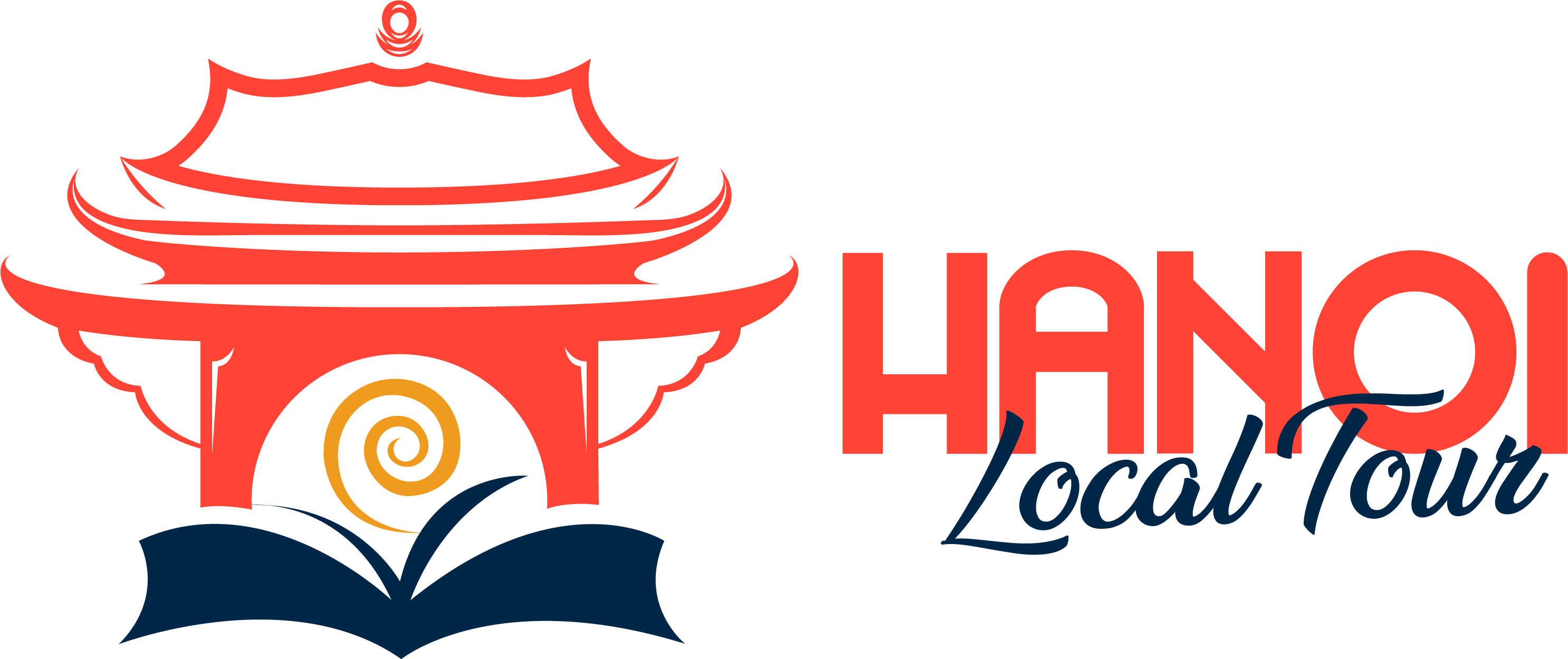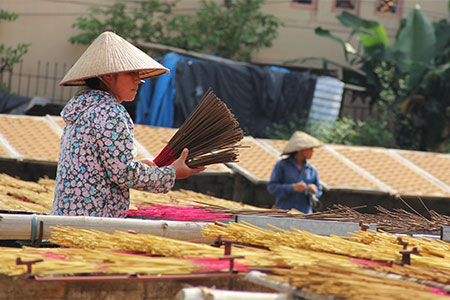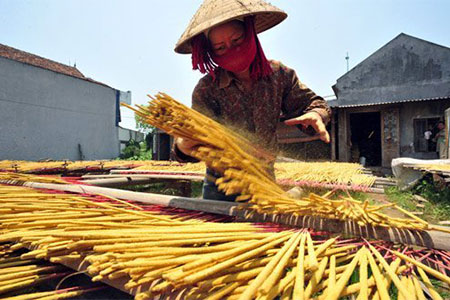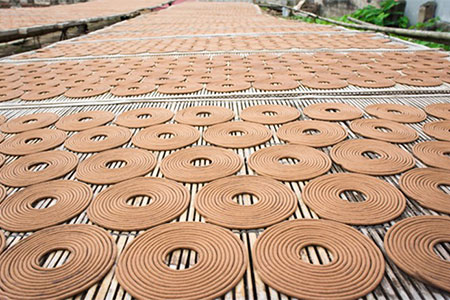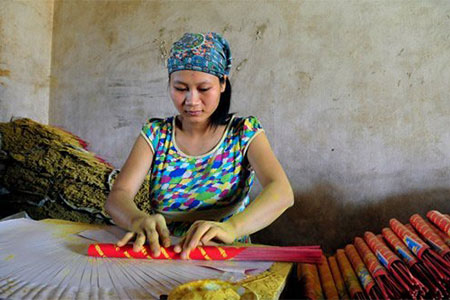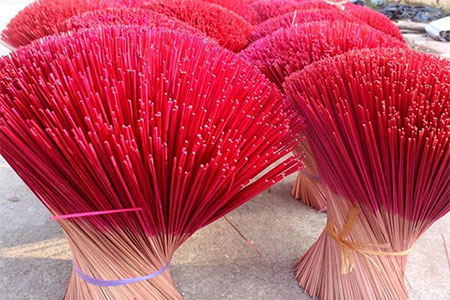With the formation and development of the country for thousands of years, beliefs and religions have been associated with Vietnamese people for a long time. Learning about the culture of Vietnam, travelers will encounter the familiar pictures in many temples, pagodas in anywhere. That is veneration of the dead. Long ago, worship is one of the cultural beauty ingrained into Vietnamese soul. In the minds of every citizen of Vietnam, offering incense is a ritual worship, symbolizing the spiritual and cultural values of the nation. Each joss stick offered is a sacred cultural beauty, expresses the profound gratitude of descendants to the ancestors, the devotion to Buddha, Saints and Goddesses in all places. Incense stands for the harmony of Heaven, Earth, and Human, as a sacred bridge between the human real life and spiritual realms of heaven and earth. The scent of joss sticks is originated from a well-known landmark of Vietnam - Cao Thon incense traditional village. Putting Cao Thon on your list of must-visit places will be a great decision to explore and discover the spiritual and cultural life of Vietnamese people.
Cao Thon incense village is located along the Red River in Bao Khe commune of Hung Yen Province, about 60km from Hanoi. First arriving in the village, you will be overwhelmed by the peculiar features of an incense village. Spreading from the village’s gate, series of incense are exposed in a wide range, then an auburn color appears with the cool scent of herbs. That is the distinctive scent of the incense in Cao Thon Village.
According to ancient stories, Ms. Dao Thi Khuong, the daughter of the village, had both talent and beauty. She traveled around to trade, then got married in China. She learned how to make incense there. When she was aware of all the secrets, she returned to her hometown and taught this technique for people of Cao Thon. Thereby, the craft of making incense in the village became developed and famous in many places. To commemorate the contribution of the ancestor of the craft, villagers built a shrine to worship her and took the annual August 22 is the anniversary day.
The job of making incense in Cao Thon villages is the most special and unlike any other craft villages of making incense thanks to raw materials creating the scent of Cao Thon’s incense. The incense of Cao Thon is made entirely by herbs, which is thirty-six types of herbs. Villagers always think that these 36 flavors of herbs are the essence of convergence between heaven and earth which is also a traditional secret only known by members of the family. Especially, it is not allowed to transfer the profession to the people outside the family. This is also the "core soul" that the villagers Cao Thon have preserved for hundreds of years. And one special thing is that these herbs have been used as medicine. While burning incense, the scent spreads helping people relax, reduce stress. Cao Thon has different kinds of incense. Each type has different ways to make and distinctive shapes but all share the same material as 36 types of herbs. Almost of the stages, from preparing, drying and compressing incense, are handmade. Villagers of Cao Thon considered making incense is their life. Making incense relates to the belief of worship and spirituality, therefore, the mind and virtue of workers has always been at the forefront, the conscience of the profession does not allow them to cheat. This is a respect for the older generation, for the ancestors so that when each joss stick of incense is offered to Supreme Being, the powerful, wishes would become true. Thus, before dispensing incense, Cao villagers usually offer incense to the altar of the ancestors, praying that everything goes smoothly, life in peace, happiness, and prosperity.
Visit Cao Thon village, visitors have the opportunity to discover how to make incense and gain a better understanding of the spiritual life through the worship of the Vietnamese as well as learn the cultural values of spiritual beauty in the lifestyle of the people here.
